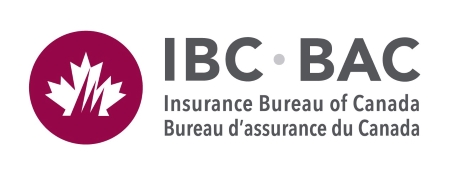OTTAWA, Oct. 1, 2019 /CNW/ - A new study released today highlights the potential to improve the accuracy of flood hazard maps by incorporating richer data. Governments, insurers and investors use flood hazard maps to determine the flood risk to neighbourhoods and individual properties.
Large-scale flood risk models currently rely on low-resolution (30-metre) topographical data of mixed quality that give limited consideration to municipal flood defences. Working with two renowned global flood risk-modelling firms, and five municipalities, the study found that 5-metre grid spacing provided the optimal resolution to evaluate flooding from intense rain events.
"The study's conclusions are important for insurers wanting to expand flood coverage for consumers, particularly in areas identified as high risk on traditional flood hazard maps," said Craig Stewart, Vice-President, Federal Affairs, Insurance Bureau of Canada (IBC). "Improving access to richer information is a significant opportunity for Canadian municipalities, insurers and homeowners to better understand flood risk and to take action."
Flooding is a costly issue for Canadian homeowners, municipalities and the insurance sector – and these costs have been growing. Property and casualty insurance payouts from extreme weather have more than doubled every five to 10 years since the 1980s.
The project's conclusions support IBC's position on the need for a National Action Plan on Flooding (ibc.ca/on/disaster/water/flooding-in-canada). Specifically, they strengthen IBC's call on governments to target priority infrastructure investments in the areas at highest risk of flooding to protect as many people as cost-effectively as possible. Stewart said IBC is also calling on governments to immediately invest in improving the quality of terrain data and to make that data available so that property-owners can identify their properties' exposure to floods and take measures to protect themselves.
"We need a proactive, cross-sector effort to continue to advance flood risk evaluation in Canada, one that reaps more value and effective actions from our collective expertise and knowledge," said Bernadette Conant, CEO of Canadian Water Network, which partnered with IBC on the study.
Conant's team presented the study's findings to decision-makers from the various sectors earlier this spring and, with IBC, facilitated a discussion on next steps.
"There is a wealth of data available – it's a matter of coordinating that information in a way that is useful to all sectors," said Conant.
The study emphasizes that Canada has an opportunity to create a central hub to connect and curate relevant data from the various sectors to improve flood risk evaluation.
For a summary of the study's findings, visit cwn-rce.ca or ibc.ca.
About the study
In 2018, Canadian Water Network (CWN) and Insurance Bureau of Canada (IBC) convened a national meeting of municipalities, insurers, the federal government and others to better understand each sector's actions on flood risk management and identify ways to move forward. The meeting led to a jointly supported national pilot project to see if richer data could be used in the models that generate flood hazard maps. Natural Resources Canada supplied high-quality topographical data, and the municipalities of Windsor, Ont.; Tecumseh, Ont.; Regina, Halifax and Edmonton supplied additional infrastructure data, including measures to prevent flooding.
About Canadian Water Network
Canadian Water Network is a trusted broker of insights for the water sector, where informed decisions result from addressing the right questions. When decision-makers ask, 'What does the science say about this?' Canadian Water Network frames what is known and unknown in a way that usefully informs the choices being made.
Water management solutions are complex, but achievable when they are customized to fit diverse geographic, operational or financial contexts. Canadian Water Network helps decision-makers move forward by laying out the available options, trade-offs and opportunities, thereby increasing clarity and confidence to make informed decisions.
About Insurance Bureau of Canada
Insurance Bureau of Canada (IBC) is the national industry association representing Canada's private home, auto and business insurers. Its member companies make up 90% of the property and casualty (P&C) insurance market in Canada. For more than 50 years, IBC has worked with governments across the country to help make affordable home, auto and business insurance available for all Canadians. IBC supports the vision of consumers and governments trusting, valuing and supporting the private P&C insurance industry. It champions key issues and helps educate consumers on how best to protect their homes, cars, businesses and properties.
P&C insurance touches the lives of nearly every Canadian and plays a critical role in keeping businesses safe and the Canadian economy strong. It employs more than 128,000 Canadians, contributes $9.4 billion in taxes and has a total premium base of $59.6 billion.
For more information, visit Canadian Water Network at cwn-rce.ca and the Insurance Bureau of Canada at www.ibc.ca.
CWN and IBC spokespeople are available to discuss the details in this media release.
SOURCE Insurance Bureau of Canada

To schedule an interview, please contact: Vanessa Barrasa, Insurance Bureau of Canada, 416-550-9062, [email protected]; Liana Kreamer, Canadian Water Network, 519-745-2225, [email protected]

Share this article